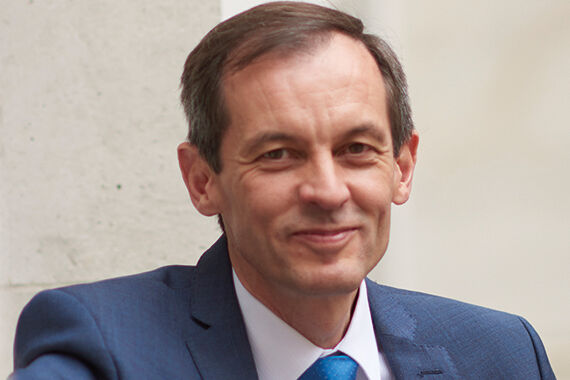
This site is intended for health professionals only

Dr Richard Vautrey, clinical director for Central North Leeds PCN, primary care lead for West Yorkshire integrated care board and former chair of the BMA GP Committee discusses the future of PCNs. This interview appeared in our Spring issue of Pulse PCN, released in March.
What should happen to PCNs after 2024?
It’s essential that the funding is retained in general practice, and that the workforce is recruited, and is confident it will continue to be able to work with practices. I would like to see the workforce closely embedded in general practice and practices, so they feel part of the team. And it’s essential that we give confidence to all of them, so we can continue to use the skills and expertise of all of those who are working in that environment.
What are the challenges managing a PCN in your area?
[The challenges are] no greater than any other organisation. We have been fortunate to recruit and retain good healthcare professionals who want to work in our practices. One of the real challenges we’ve had is the space in our practices: many practices are bursting at the seams already. Finding space for our staff to consult with patients and be active members of the practice team is a challenge for some practices where they simply don’t have the physical infrastructure to do that in a way they want to.
But we’re really pleased that we’ve been able to get a pharmacist in every practice. We’ve got paramedics doing home visiting, we’ve got social prescribers supporting us with vulnerable patients, and physios offering direct access to patients within a matter of days rather than months.
We’ve seen significant benefits from our PCN workforce. And it’s enabled really good collaboration between our member practices.
Finding space for additional staff is a big problem for practices. What’s the scale of the estates issue for your PCN?
It’s one of the biggest issues. We’ve been fortunate to recruit hundreds of new people into our general practice workforce but, at the same time, we haven’t seen similar investment going to estates or IT or basic infrastructure to support their work in the practice team.
It’s crucial that the Government and NHS England prioritise the investment in premises in the community, and that we get the necessary space not just to support the PCN workforce, but to be able to do more in the community setting: this is one of the stated aims of the Government and many political parties. They want to see more activity taking place in a community healthcare setting, but we can’t do that without proper investment for the long term in our infrastructure.
How well does your integrated care board (ICB) work with primary care?
They’re doing well with the resources they have. One of the challenges we’ve got, as with many other areas, is that when we want to provide more support to our practices, through income protection for QOF or suspending Investment and Impact Fund (IIF) targets, NHS England nationally doesn’t give the ICB the power to do that. That is frustrating. Our ICB has a strong philosophy of devolving decision-making and resources to back to the places within our area. So most of the decision-making in general practice continues to take place at a local level, which is a good thing: we have strong relationships that are built up over many years with our ICB colleagues who were formerly CCG colleagues.
Have you noticed a change in that relationship in the switch from the CCG?
No, we haven’t. I think we’ve been fortunate because our ICB has a strong philosophy of enabling decision-making and resources to flow to the local community, we haven’t seen a difference in the way we’ve engaged with the various places in our region.
We’re about to receive the first report from the Hewitt Review. What would you like to see from that?
There is a fine balance. We want to maintain the protection that we have from a national GMS contract. It’s vital that we do that and retain the ring-fenced resource that goes into general practice through that national contract.
But having said that, if NHS England is not going to listen to the real evidence of the pressure that chasing targets is causing practices, we want to have the flexibility to continue to provide long-term care to patients who need it without the worry of having to achieve targets to maintain our income or to keep the practice running.
We need the ICB to have that ability to make those kinds of changes and to do so with our local knowledge.
Last year’s Fuller Stocktake proposed the idea of morphing PCNs into ‘integrated neighbourhood teams’. How do you see that shift happening?
We already work closely with our community nursing colleagues and the wider community team. But they’re already stretched to capacity – as are our practices. Unless there is a significant resource shift into community teams as well as indirectly into practices, it’s hard for an integrated team to do more than it’s already doing.
Having a relationship when you’ve got people working in the same building, in the same locality, can help smoothe out the ways that working takes place. But nevertheless, I think we need to recognise that our community colleagues are as stretched, if not more stretched in places than many in general practice.
They are also struggling to recruit: we haven’t seen the expansion of community teams in a way that’s necessary for the growing needs of more elderly and complex population. Just bringing them together in a more integrated way doesn’t solve those problems.